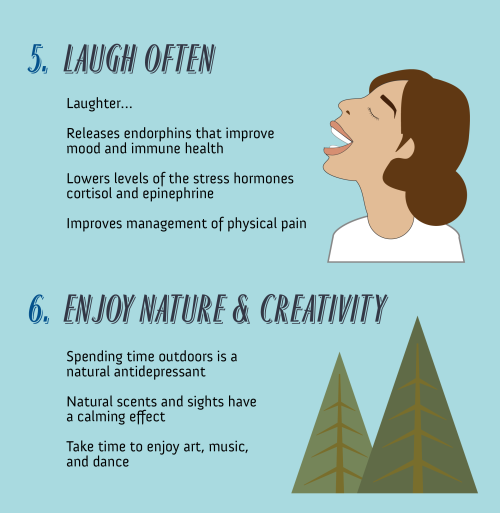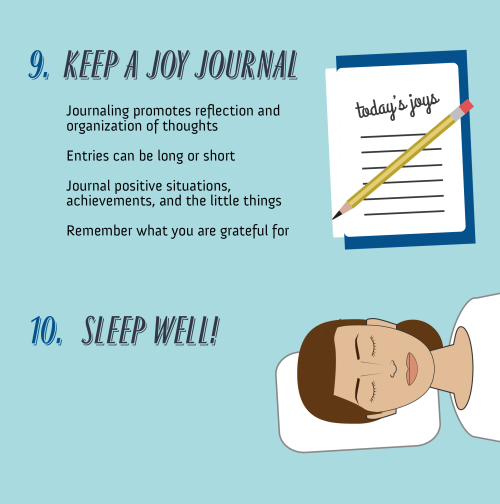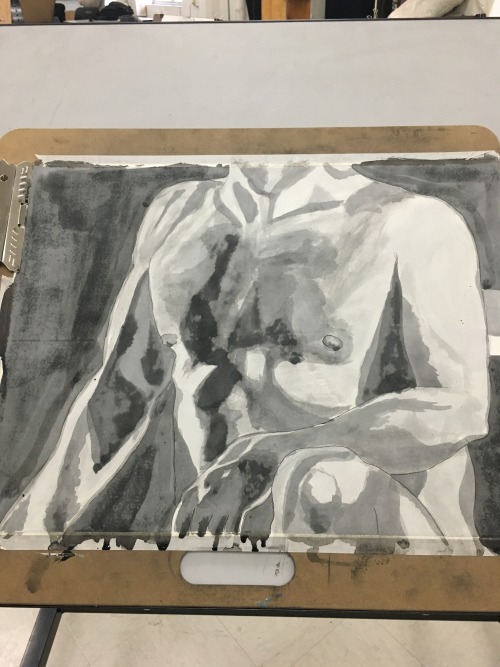Why Do We Dream?
Why do we dream?

In the 3rd millennium BCE, Mesopotamian kings recorded and interpreted their dreams on wax tablets. In the years since, we haven’t paused in our quest to understand why we dream. And while we still don’t have any definitive answers, we have some theories. Here are seven reasons we might dream.

1. In the early 1900’s, Sigmund Freud proposed that while all of our dreams, including our nightmares, are a collection of images from our daily conscious lives, they also have symbolic meanings which relate to the fulfillment of our subconscious wishes. Freud theorized that everything we remember when we wake up from a dream is a symbolic representation of our unconscious, primitive thoughts, urges and desires. Freud believed that by analyzing those remembered elements, the unconscious content would be revealed to our conscious mind, and psychological issues stemming from its repression could be addressed and resolved.

2. To increase performance on certain mental tasks, sleep is good, but dreaming while sleeping is better. In 2010, researchers found that subjects were much better at getting through a complex 3D maze if they had napped and dreamed of the maze prior to their second attempt. In fact, they were up to ten times better at it than those who only thought of the maze while awake between attempts, and those who napped but did not dream about the maze. Researchers theorize that certain memory processes can happen only when we are asleep, and our dreams are a signal that these processes are taking place.

3. There are about ten thousand trillion neural connections within the architecture of your brain. They are created by everything you think, and everything you do. A 1983 neurobiological theory of dreaming, called “reverse learning,” holds that while sleeping, and mainly during REM sleep cycles, your neocortex reviews these neural connections and dumps the unnecessary ones. Without this unlearning process, which results in your dreams, your brain could be overrun by useless connections, and parasitic thoughts could disrupt the necessary thinking you need to do while you’re awake.

4. The “Continual Activation Theory” proposes that your dreams result from your brain’s need to constantly consolidate and create long term memories in order to function properly. So when external input falls below a certain level, like when you’re asleep, your brain automatically triggers the generation of data from its memory storages, which appear to you in the form of the thoughts and feelings you experience in your dreams. In other words, your dreams might be a random screensaver your brain turns on so it doesn’t completely shut down.

5. Dreams involving dangerous and threatening situations are very common, and the Primitive Instinct Rehearsal Theory holds that the content of a dream is significant to its purpose. Whether it’s an anxiety filled night of being chased through the woods by a bear, or fighting off a ninja in a dark alley, these dreams allow you to practice your fight or flight instincts and keep them sharp and dependable, in case you’ll need them in real life. But it doesn’t always have to be unpleasant; for instance, dreams about your attractive neighbor could actually give your reproductive instinct some practice too.

6. Stress neurotransmitters in the brain are much less active during the REM stage of sleep, even during dreams of traumatic experiences, leading some researchers to theorize that one purpose of dreaming is to take the edge off painful experiences to allow for psychological healing. Reviewing traumatic events in your dreams with less mental stress may grant you a clearer perspective and an enhanced ability to process them in psychologically healthy ways. People with certain mood disorders and PTSD often have difficulty sleeping, leading some scientists to believe that lack of dreaming may be a contributing factor to their illnesses.

7. Unconstrained by reality and the rules of conventional logic, in your dreams your mind can create limitless scenarios to help you grasp problems and formulate solutions that you may not consider while awake. John Steinbeck called it “the Committee of Sleep” and research has demonstrated the effectiveness of dreaming on problem solving. It’s also how renowned chemist August Kekule discovered the structure of the benzene molecule, and it’s the reason that sometimes the best solution for a problem is to “sleep on it”.
And those are just a few of the more prominent theories. As technology increases our capability for understanding the brain, it’s possible that one day we will discover the definitive reason for them; but until that time arrives, we’ll just have to keep on dreaming.
From the TED-Ed Lesson Why do we dream? - Amy Adkins
Animation by @clamanne
More Posts from Karlfelersii and Others
How to Study Effectively | Psych2Go
Incoming! We’ve Got Science from Jupiter!
Our Juno spacecraft has just released some exciting new science from its first close flyby of Jupiter!

In case you don’t know, the Juno spacecraft entered orbit around the gas giant on July 4, 2016…about a year ago. Since then, it has been collecting data and images from this unique vantage point.

Juno is in a polar orbit around Jupiter, which means that the majority of each orbit is spent well away from the gas giant. But once every 53 days its trajectory approaches Jupiter from above its north pole, where it begins a close two-hour transit flying north to south with its eight science instruments collecting data and its JunoCam camera snapping pictures.

Space Fact: The download of six megabytes of data collected during the two-hour transit can take one-and-a-half days!

Juno and her cloud-piercing science instruments are helping us get a better understanding of the processes happening on Jupiter. These new results portray the planet as a complex, gigantic, turbulent world that we still need to study and unravel its mysteries.
So what did this first science flyby tell us? Let’s break it down…
1. Tumultuous Cyclones

Juno’s imager, JunoCam, has showed us that both of Jupiter’s poles are covered in tumultuous cyclones and anticyclone storms, densely clustered and rubbing together. Some of these storms as large as Earth!

These storms are still puzzling. We’re still not exactly sure how they formed or how they interact with each other. Future close flybys will help us better understand these mysterious cyclones.

Seen above, waves of clouds (at 37.8 degrees latitude) dominate this three-dimensional Jovian cloudscape. JunoCam obtained this enhanced-color picture on May 19, 2017, at 5:50 UTC from an altitude of 5,500 miles (8,900 kilometers). Details as small as 4 miles (6 kilometers) across can be identified in this image.

An even closer view of the same image shows small bright high clouds that are about 16 miles (25 kilometers) across and in some areas appear to form “squall lines” (a narrow band of high winds and storms associated with a cold front). On Jupiter, clouds this high are almost certainly comprised of water and/or ammonia ice.
2. Jupiter’s Atmosphere
Juno’s Microwave Radiometer is an instrument that samples the thermal microwave radiation from Jupiter’s atmosphere from the tops of the ammonia clouds to deep within its atmosphere.

Data from this instrument suggest that the ammonia is quite variable and continues to increase as far down as we can see with MWR, which is a few hundred kilometers. In the cut-out image below, orange signifies high ammonia abundance and blue signifies low ammonia abundance. Jupiter appears to have a band around its equator high in ammonia abundance, with a column shown in orange.

Why does this ammonia matter? Well, ammonia is a good tracer of other relatively rare gases and fluids in the atmosphere…like water. Understanding the relative abundances of these materials helps us have a better idea of how and when Jupiter formed in the early solar system.
This instrument has also given us more information about Jupiter’s iconic belts and zones. Data suggest that the belt near Jupiter’s equator penetrates all the way down, while the belts and zones at other latitudes seem to evolve to other structures.
3. Stronger-Than-Expected Magnetic Field

Prior to Juno, it was known that Jupiter had the most intense magnetic field in the solar system…but measurements from Juno’s magnetometer investigation (MAG) indicate that the gas giant’s magnetic field is even stronger than models expected, and more irregular in shape.

At 7.766 Gauss, it is about 10 times stronger than the strongest magnetic field found on Earth! What is Gauss? Magnetic field strengths are measured in units called Gauss or Teslas. A magnetic field with a strength of 10,000 Gauss also has a strength of 1 Tesla.

Juno is giving us a unique view of the magnetic field close to Jupiter that we’ve never had before. For example, data from the spacecraft (displayed in the graphic above) suggests that the planet’s magnetic field is “lumpy”, meaning its stronger in some places and weaker in others. This uneven distribution suggests that the field might be generated by dynamo action (where the motion of electrically conducting fluid creates a self-sustaining magnetic field) closer to the surface, above the layer of metallic hydrogen. Juno’s orbital track is illustrated with the black curve.
4. Sounds of Jupiter
Juno also observed plasma wave signals from Jupiter’s ionosphere. This movie shows results from Juno’s radio wave detector that were recorded while it passed close to Jupiter. Waves in the plasma (the charged gas) in the upper atmosphere of Jupiter have different frequencies that depend on the types of ions present, and their densities.
Mapping out these ions in the jovian system helps us understand how the upper atmosphere works including the aurora. Beyond the visual representation of the data, the data have been made into sounds where the frequencies and playback speed have been shifted to be audible to human ears.
5. Jovian “Southern Lights”

The complexity and richness of Jupiter’s “southern lights” (also known as auroras) are on display in this animation of false-color maps from our Juno spacecraft. Auroras result when energetic electrons from the magnetosphere crash into the molecular hydrogen in the Jovian upper atmosphere. The data for this animation were obtained by Juno’s Ultraviolet Spectrograph.

During Juno’s next flyby on July 11, the spacecraft will fly directly over one of the most iconic features in the entire solar system – one that every school kid knows – Jupiter’s Great Red Spot! If anybody is going to get to the bottom of what is going on below those mammoth swirling crimson cloud tops, it’s Juno.

Stay updated on all things Juno and Jupiter by following along on social media: Twitter | Facebook | YouTube | Tumblr
Learn more about the Juno spacecraft and its mission at Jupiter HERE.

In the winter of 1995, scientists pointed the Hubble Telescope at an area of the sky near the Big Dipper, a spot that was dark and out of the way of light pollution from surrounding stars. The location was apparently empty, and the whole endeavor was risky. What, if anything, was going to show up? Over ten consecutive days, the telescope took close to 150 hours of exposure of that same area. And what came back was nothing short of spectacular: an image of over 1,500 distinct galaxies glimmering in a tiny sliver of the universe.
Now, let’s take a step back to understand the scale of this image. If you were to take a ballpoint pen and hold it at arm’s length in front of the night sky, focusing on its very tip, that is what the Hubble Telescope captured in its first Deep Field image. In other words, those 3,000 galaxies were seen in just a tiny speck of the universe, approximately one two-millionth of the night sky.
So the next time you stand gazing up at the night sky, take a moment to think about the enormity of what is beyond your vision, out in the dark spaces between the stars.
From the TED-Ed Lesson How small are we in the scale of the universe? - Alex Hofeldt
Animation by Yukai Du

A cannabis compound has been proven for the first time to reduce the frequency of seizures in people with a rare, severe form of epilepsy, according to the results of a randomized trial.
For years, parents have pointed to anecdotal benefits of cannabidiol (CBD), a compound in the marijuana plant that does not produce a high, saying it reduces seizures in treatment-resistant epilepsy.
Now doctors have performed a randomized trial to show cause and effect, with the findings published in Wednesday’s issue of the New England Journal of Medicine.
To conduct the study, the researchers focused on Dravet syndrome, a rare form of epilepsy that begins in infancy and is linked to a particular mutation that often resists combinations of up to 10 conventional seizure medications. They enrolled 120 patients who ranged in age from 2.5 to 18 years.
Sixty-one patients were randomly assigned to cannabidiol, and the 59 others to placebo. Neither the researchers nor the families knew who received the medication to prevent bias. All continued to take their existing medications.
“The message is that cannabidiol does work in reducing convulsing seizures in children with Dravet syndrome,” said lead author Dr. Orrin Devinksy, who is director of NYU’s Langone Comprehensive Epilepsy Center.
For those in the cannabinoid group, the median number of convulsive seizures per month dropped from 12.4 per month before treatment, to 5.9 seizures, the researchers reported.
The placebo group, in comparison, only saw their convulsive seizures fall from 14.9 per month, to 14.1.
Continue Reading.








For more posts like these, go to @mypsychology

New Western University research shows that neurons in the part of the brain found to be abnormal in psychosis are also important in helping people distinguish between reality and imagination.
The researchers, Dr. Julio Martinez-Trujillo, principal investigator and professor at Western University’s Schulich School of Medicine & Dentistry and Dr. Diego Mendoza-Halliday, postdoctoral researcher at M.I.T., investigated how the brain codes visual information in reality versus abstract information in our working memory and how those differences are distributed across neurons in the lateral prefrontal cortex region of the brain. The results were published today in Nature Communications.
“Neuronal population coding of perceived and memorized visual features in the lateral prefrontal cortex” by Diego Mendoza-Halliday & Julio C. Martinez-Trujillo in Nature Communications. Published online June 1 2017 doi:10.1038/ncomms15471


-
 megan-mayhem liked this · 1 year ago
megan-mayhem liked this · 1 year ago -
 jumptent liked this · 2 years ago
jumptent liked this · 2 years ago -
 krealibero reblogged this · 2 years ago
krealibero reblogged this · 2 years ago -
 danniam liked this · 3 years ago
danniam liked this · 3 years ago -
 belialhaematemesis liked this · 3 years ago
belialhaematemesis liked this · 3 years ago -
 fuzzydino69 liked this · 4 years ago
fuzzydino69 liked this · 4 years ago -
 poeticislam liked this · 4 years ago
poeticislam liked this · 4 years ago -
 frozeninmilan reblogged this · 4 years ago
frozeninmilan reblogged this · 4 years ago -
 queeg liked this · 4 years ago
queeg liked this · 4 years ago -
 nanamikentcs reblogged this · 4 years ago
nanamikentcs reblogged this · 4 years ago -
 delphis50 reblogged this · 5 years ago
delphis50 reblogged this · 5 years ago -
 neuroticaweiss reblogged this · 5 years ago
neuroticaweiss reblogged this · 5 years ago -
 neuroticaweiss liked this · 5 years ago
neuroticaweiss liked this · 5 years ago
